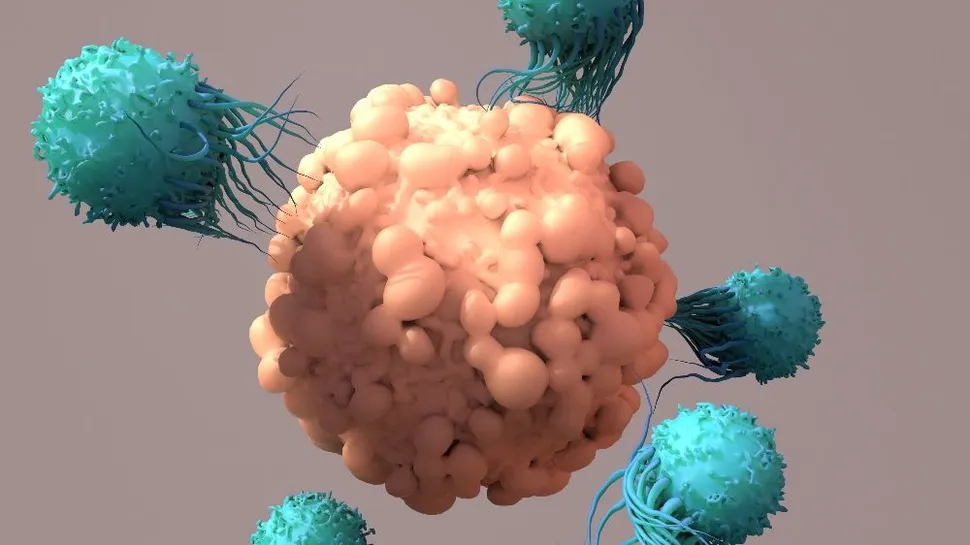A New Immunotherapy for Myeloma Treatment: STAb T cells

Myeloma researchers in Spain (Spanish National Cancer Research Center and the University Hospital October 12) have discovered a new way to engineer T cells for multiple myeloma treatment.
While CAR T-cell and bispecific antibody therapy have shown great promise in the myeloma treatment landscape, patients continue to relapse after these therapies, proving the need for more durable treatments or other therapeutic strategies for those with relapsed/refractory disease.
What are STAb T cells?
The newly engineered T cells, known as STAb T cells, combine the ideas between the successful CAR and bispecific therapies to create a new immunotherapy for multiple myeloma patients. How? The T cells are modified in the lab to secrete bispecific T-cell-engaging antibodies.
While those conducting the clinical trials still believe they are two to three years out from a human clinical trial with this product (it has currently only been tested on mice), the promising results allude to a hopeful future in myeloma treatment if this product is approved.
The STAb T cells are programmed to secrete bispecific T-cell-engaging antibodies that target BCMA and CD3, both surface proteins found on multiple myeloma cells. Through this dual targeting, the STAb cells are more likely to target and attack only cancer cells.
What were the study results of this new myeloma immunotherapy?
The researchers' study found that when administered to mice models/multiple myeloma cells, the STAb T cells were able to locate and kill myeloma cells and control disease progression more effectively than the CAR T products on the market today.
The STAb T cells also did a better job than their CAR-T counterparts in recruiting natural (non-engineered) T-cells found in the immune system to fight multiple myeloma cells, thus making the therapy more effective overall.
This new way of engineering T cells also made them last longer within models than the CAR-engineered cells, creating more durable responses and lasting effects. Moreover, the T cells had immunological memory, making sure that newly created myeloma cells would be immediately destroyed.
Conclusion
Of course, this is all still early research, and much more information is needed before we know if STAb T cells will move forwards as multiple myeloma treatments for our communities, but the idea is promising. It is also exciting to see new and improved methods of already successful immunotherapies being created, proving that the myeloma treatment landscape just continues to improve. Stay tuned to see where this promising therapy goes.
Myeloma researchers in Spain (Spanish National Cancer Research Center and the University Hospital October 12) have discovered a new way to engineer T cells for multiple myeloma treatment.
While CAR T-cell and bispecific antibody therapy have shown great promise in the myeloma treatment landscape, patients continue to relapse after these therapies, proving the need for more durable treatments or other therapeutic strategies for those with relapsed/refractory disease.
What are STAb T cells?
The newly engineered T cells, known as STAb T cells, combine the ideas between the successful CAR and bispecific therapies to create a new immunotherapy for multiple myeloma patients. How? The T cells are modified in the lab to secrete bispecific T-cell-engaging antibodies.
While those conducting the clinical trials still believe they are two to three years out from a human clinical trial with this product (it has currently only been tested on mice), the promising results allude to a hopeful future in myeloma treatment if this product is approved.
The STAb T cells are programmed to secrete bispecific T-cell-engaging antibodies that target BCMA and CD3, both surface proteins found on multiple myeloma cells. Through this dual targeting, the STAb cells are more likely to target and attack only cancer cells.
What were the study results of this new myeloma immunotherapy?
The researchers' study found that when administered to mice models/multiple myeloma cells, the STAb T cells were able to locate and kill myeloma cells and control disease progression more effectively than the CAR T products on the market today.
The STAb T cells also did a better job than their CAR-T counterparts in recruiting natural (non-engineered) T-cells found in the immune system to fight multiple myeloma cells, thus making the therapy more effective overall.
This new way of engineering T cells also made them last longer within models than the CAR-engineered cells, creating more durable responses and lasting effects. Moreover, the T cells had immunological memory, making sure that newly created myeloma cells would be immediately destroyed.
Conclusion
Of course, this is all still early research, and much more information is needed before we know if STAb T cells will move forwards as multiple myeloma treatments for our communities, but the idea is promising. It is also exciting to see new and improved methods of already successful immunotherapies being created, proving that the myeloma treatment landscape just continues to improve. Stay tuned to see where this promising therapy goes.

about the author
Audrey Burton-Bethke
Audrey is a content writer and editor for the HealthTree Foundation. She originally joined the HealthTree Foundation in 2020. Audrey loves spending time with her supportive husband, energetic four-year-old, and new baby.
More on Treatment Advances
Trending Articles
Upcoming Events




Get the Latest Multiple Myeloma Updates, Delivered to You.
By subscribing to the HealthTree newsletter, you'll receive the latest research, treatment updates, and expert insights to help you navigate your health.
Together we care.
Together we cure.
3x Faster.













